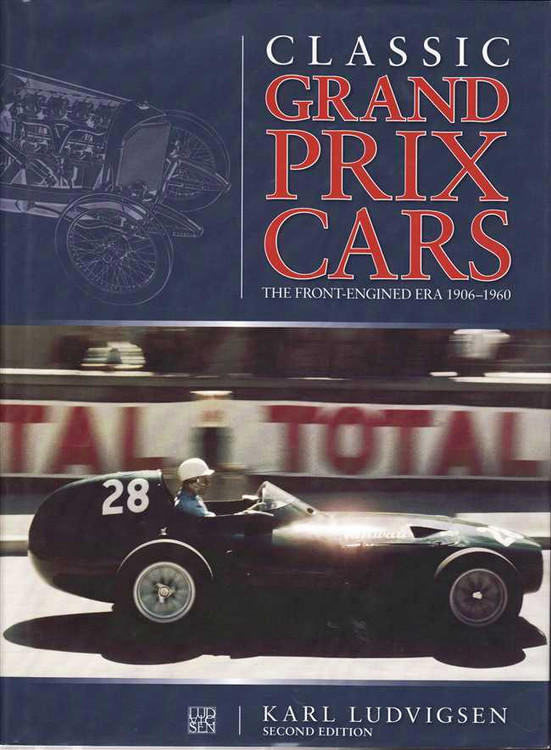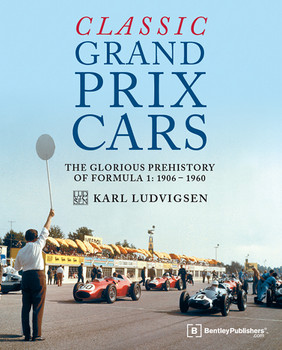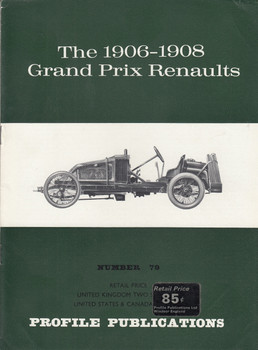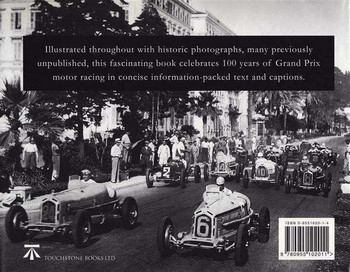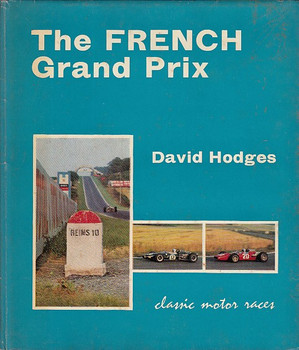Description
By: Karl Ludvigsen .
The front-engined racing car dominated Grand Prix racing for the first half-century of the sport, from the inaugural Grand Prix in 1906 through to the late 1950s. Karl Ludvigsen's authoritative and beautifully illustrated history of the development of these powerful machines celebrates the engineering brilliance of their designs and creators.
In this second edition — expanded with glorious new colour portfolios — the author describes the technical evolution of the cars, decade by decade. He accompanies this with insights into the rise and fall of the famous manufacturers whose creations were the ultimate expression of the motoring know-how of their day. His revelation of the exciting, innovative early days of the Grand Prix car makes fascinating reading as well as providing a lasting reference for all motor racing enthusiasts with a sense of history.
Front-engined cars were well-established as the ideal racing machines by the time a Renault triumphed in the first Grand Prix, held in France. In the years just before the First World War, cars from Daimler, Benz, Fiat, Mercedes, Opel and Peugeot competed fiercely for technical superiority. They established the great tradition of the Grand Prix as the ultimate form of racing over real roads.
Karl Ludvigsen describes the conception and construction of these potent vehicles and records their remarkable exploits in Europe and America. He recalls, too, how sensational advances in engine and chassis technology in the 1920s and 1930s gave birth to hugely powerful single-seaters. This period was distinguished by outstanding cars made by Duesenberg, Fiat, Alfa Romeo, Delage, Bugatti and Maserati. It also produced the Mercedes-Benz racers of the late 1930s which not only fought off the challenge of the rear-engined Auto Unions but also set records for speeds that were not surpassed until the 1950s.
The book's special strength is its account of the increasingly complex Grand Prix cars that competed at the highest levels of the sport after the Second World War. The Maseratis, Alfa Romeos, BRMs, Lancias, Mercedes, Vanwalls, Lotuses and Ferraris of this period were the best and last of their kind. Victories by the rear-engined Cooper of 1959 signalled the sudden end of 50 years of continuous development and the beginning of the modern era in Formula 1 racing.
Karl Ludvigsen's perceptive reappraisal of the long and illustrious career of the frontengined Grand Prix car vividly recreates the technical and racing battles of this classic period of motorsport. It will he of great interest to those who are keen to learn about the nature and significance of these extraordinary ancestors of today's high-tech Formula 1 cars. Another feature of Classic Grand Prix Cars is its specially compiled table of key specifications of 112 great racing cars from 1903 to 1960.
Karl Ludvigsen is a world-renowned motoring historian and author with some four dozen books to his credit. As well as being an expert on top-level single-seater and sports-car racing, he has made a particular study of the cars and histories of Volkswagen, Corvette, Porsche and Mercedes-Benz and the careers of such drivers as Stirling Moss, Juan-Manuel Fangio and Jackie Stewart.
The winner of numerous awards, he is a former vice-president of Ford of Europe — where motorsport was among his responsibilities — and a partner in the Ludvigsen Library, a leading UK-based motoring archive. Its resources have made possible the rich and varied illustrations of Classic Grand Prix Cars.
